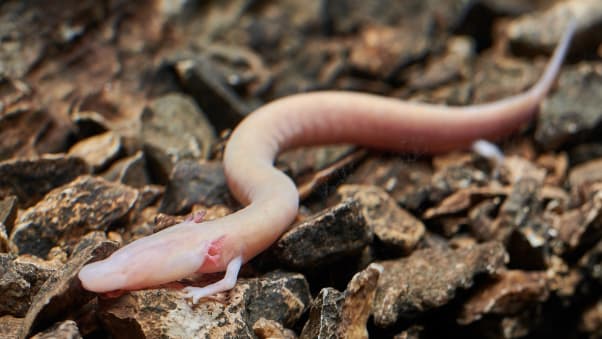A massive cave in the heart of Europe holds a secret: it is the home to a most mysterious creature. Could it be… a dragon?
Not really, though that is one of many names used by the people of Slovenia to describe this unique, legendary animal. A recent article clarifies that the creature is an olm, or blind salamander, Proteus anguinus. Olms are full of contradictions and quirks: they are categorized as amphibians yet remain in their juvenile aquatic phase all their lives (their eating, sleeping, and breeding all occur underwater). They dwell only in caves and thus have adapted entirely to living in darkness, with undeveloped eyes and amped-up senses of hearing and smell. They can go long periods—years, even--without eating. And they can live to the venerable age of 100!
For centuries, legends have grown around these animals, known as "baby dragons" because they would wash out of their territory, the cave of Postojna, during floods, and caves have been long thought to be the realm of dragons. But why the attention to these strange creatures—also known as "human fish" because of their smooth, pinkish skin--NOW? High on the list of reasons are the possibilities that olm DNA offers researchers. Biologists are fascinated by the complexity of the olm's genome—which is sixteen times longer than the human genome, and full of curiously empty spaces. Perhaps an even more intriguing attraction is the ability of the olm, like that of salamanders, to regenerate limbs. Unlocking that secret for use in humankind would be, well, as marvelous as encountering a dragon….
The fascinating behavior of olms includes voracious eating habits and peculiar mating dances in the course of their long, long lives. And apparently these strange creatures have become a major tourist attraction, for the cave and for Slovenia in general.
A trip to visit baby dragons—sorry, olms--might just be one for the bucket list!
